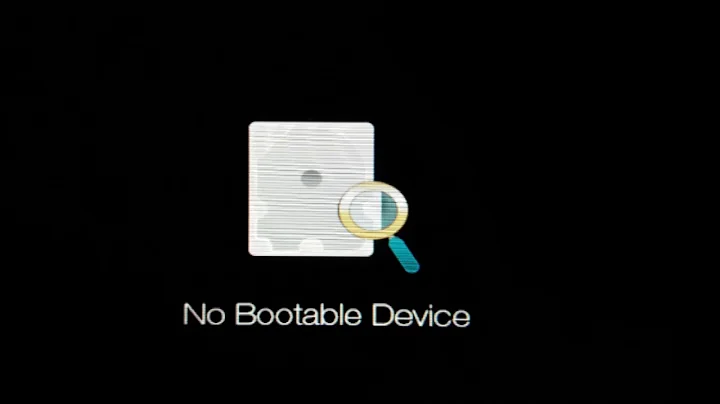My new Acer Aspire 7 doesn't have a Legacy Boot option, what can I do to get it?
Solution 1
In some BIOS settings (and if I recall correctly that was the case in several Acer Aspire models I have seen) the option was there under a different name: It was listed as an option to UEFI under the name CSM.
If it really isn't there at all (which wouldn't surprise me for an Acer computer as they are really focused on the low-cost Windows-only market) you will have to install the Linux in UEFI mode, but that shouldn't be a problem at all. Any reasonably modern Linux supports it, except some specialist distros designed to give elderly computers a second life. (These can be 32-bit only or use a V2 kernel and that won't work with a regular UEFI BIOS.)
In case your Linux distro of choice only offers a non-UEFI installation, it can often be easily made UEFI capable by downloading the ISO and using Rufus (or a similar utility) to write it to a USB stick in UEFI/MBR compatibility mode.
Be advised that using an UEFI system in Legacy or CSM mode is not recommended. The option is provided as a fallback, but your system will boot faster in pure UEFI mode. And in some cases not all on-board hardware can be utilized to its full capacity in Legacy/CSM mode.
Solution 2
I install Linux distros in such a way, that they are compatible with UEFI Boot (if a particular distro allows for this option, of course) or,
Most modern distributions support UEFI, both for the installer and for the installed system.
Technically, all x86_64 distros allow the installed system to boot using UEFI, some just need more work than others. At worst, if the distro doesn't offer this option at install time (let's say you're installing it using another PC), the manual process should be the same as it is for Arch:
- During installation, make sure to create a small-ish EFI system partition.
- Format that partition with FAT32.
- Install an UEFI-capable bootloader such as GRUB2 or systemd-boot into that partition.
- If the bootloader's installer hasn't done so, copy its
*.efifile toEFI/Boot/bootx64.efi.
(When installing GRUB2 this can be done usinggrub-install --removable.)
Step 4 is most important here; it's the primary difference between installing to removable media and fixed disks – because you cannot carry NVRAM variables with the USB stick, UEFI offers an alternative option that relies only on a specific file path. (This is how the distro installers themselves boot in UEFI mode.)
Solution 3
Some Acer laptops are notorious for requiring users to set a supervisor password before they can do things like disabling Secure Boot and/or enabling Legacy Boot.
See similar SuperUser question & accepted answer: How to disable Secure Boot on an Acer Aspire 3 laptop?.
Most likely you need to set a supervisor password and then disable Secure Boot for the Legacy Boot option to become available.
Related videos on Youtube
God bless
"Whoever has God lacks nothing. God alone suffices." — St. Teresa of Ávila
Updated on September 18, 2022Comments
-
 God bless over 1 year
God bless over 1 yearI am greatly disappointed by this fact, as I need Legacy Boot in order to boot into Linux OS via an USB port. Well, I only have UEFI.
I've considered two options thus far:
I install Linux distros in such a way, that they are compatible with UEFI Boot (if a particular distro allows for this option, of course) or,
I flash a BIOS which supports Legacy Boot, which yes, I am aware, is sketchy and dangerous and could mess up my device.
I am asking for advice. Please, provide the easiest and the least dangerous way to accomplish Legacy Boot (note: Dual Boot is unacceptable for me; I must be able to boot into Linux from a separate physical device). Thank you in advance and God bless.
-
 Moab over 4 yearsSpecific model of Acer Aspire?
Moab over 4 yearsSpecific model of Acer Aspire? -
ScottishTapWater over 4 yearsLinux no longer requires legacy boot, most distributions (any debian, arch or fedora based ones included) now have UEFI support
-
 phuclv over 4 yearsthere are no reasons to use BIOS these days. All alive distros support UEFI and major distros even support secure boot
phuclv over 4 yearsthere are no reasons to use BIOS these days. All alive distros support UEFI and major distros even support secure boot -
 Joseph Sible-Reinstate Monica over 4 years"I need Legacy Boot in order to boot into Linux OS via an USB port" No you don't. It's easy to make a UEFI-booting USB drive (see wiki.archlinux.org/… for example).
Joseph Sible-Reinstate Monica over 4 years"I need Legacy Boot in order to boot into Linux OS via an USB port" No you don't. It's easy to make a UEFI-booting USB drive (see wiki.archlinux.org/… for example).
-
user1686 over 4 yearsSometimes the option is completely hidden as long as Secure Boot is enabled.
-
Tonny over 4 years@grawity Good point. I forgot to mention that myself.
-
 tvdo over 4 yearsApart from using the fallback, you can also add boot entries to nvram via
tvdo over 4 yearsApart from using the fallback, you can also add boot entries to nvram viaefibootmgr(Linux) orbcfg(EFI Shell, more reliable but harder to use). Along with that, you can technically point directly to the Linux kernel - the kernel has supported "EFI Stub" mode (where it acts as a valid EFI executable) for quite a while.




